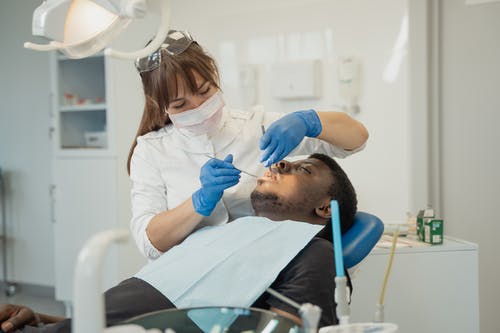Orthodontic braces are a popular oral treatment that fixes crooked or crowded teeth, bite issues, and jaw misalignment. Brackets are attached to the teeth, and wires and bands link them. The brackets are usually made of metal but can also be made of ceramic or clear materials to make them less obvious. Some types involve using clear and removable aligners.
Learn all you need to know about braces in this post.
An Overview of Dental Braces
Braces can help patients enhance facial appearance, improve dental maintenance, and maintain excellent dental health. The following are some crucial pieces of information about braces:
Age Limit
The age limit for dental braces is flexible, depending on each patient’s specific needs. Generally, orthodontic treatment can be given to anyone, provided that all their permanent teeth have erupted between 13 to 14 years of age. Furthermore, a person should have healthy teeth, gums, and supporting bone structures. The type of braces used also determines the ideal time for a person to use them.
For instance, a nine-year-old can wear traditional metal braces if the treatment is needed to fix severe orthodontic issues. Generally, the best candidate for braces are individuals who are 18 and above.
Age Ranges
Braces can address dental problems at any age, and the recommended age range for braces can differ. However, specific age ranges are more common for braces treatment. Here are some basic guidelines for braces at different age ranges:
Children
Orthodontic treatment for children often begins around age 7, when permanent teeth emerge. The best pediatric dentist in Livingston can identify possible teeth, jaw, and bite alignment issues at this age. If problems are detected early and corrected with braces, they are less likely to worsen and require less time in braces.
Teenagers
This is the most common age range for orthodontic treatment with braces. By this time, all or most permanent teeth have appeared, and the jaw has stopped growing, making it easier to deal with issues with teeth alignment and bite. Also, teenagers might be more self-conscious about their looks, so less visible braces, like clear or ceramic braces, might be preferred.
Adults
A dental clinic in Livingston that offers orthodontic treatment with braces is becoming increasingly well-known among adults. Improving oral wellness and obtaining a straighter smile is never too late. Adults might have different concerns, like the time needed for treatment, the cost, and the visibility of the braces. Invisalign or clear braces might be preferred by adults that wish to achieve straighter teeth without the appearance of traditional metal braces.
Different Kinds of Braces
Orthodontists use several different braces treatment approaches to correct dental issues. The most common types are as follows:
- Traditional metal braces: These are metal brackets and wires attached to the teeth. They are the most popular braces and are effective in fixing many dental problems.
- Ceramic braces: These resemble traditional metal braces, but the brackets are made of clear or tooth-colored ceramic material, making them less noticeable. However, they can be more fragile and might require more careful cleaning. You may consult your dentist if you need ceramic braces.
- Lingual braces: This is an alternative to visible metal braces, with brackets and wires placed behind the teeth. They are an excellent option for persons who want to align their teeth discreetly, but they might need more work to clean and adjust.
- Invisalign: This is a clear, custom-made aligner worn over the teeth to slowly shift them into the right position. Invisalign is almost unseen and removable for eating, brushing, and flossing.
Early Indications of Orthodontic Issues
Early discovery is vital for successful treatment. Here are some common warning signs of orthodontic issues that an orthodontist should deal with:
- Crowded or crooked teeth
- Bite problems
- Mouth breathing
- Difficulty with speech
- Thumb sucking
- Early loss of baby teeth
If you have any of these signs, it’s time to see an orthodontist to figure out if you need orthodontic treatment. Early treatment can lead to less invasive and more effective treatment alternatives.
Final Thoughts
Orthodontic treatment with braces can improve dental wellness, boost confidence, and lead to a healthier smile. The ideal treatment plan for each patient can only be determined after an appointment with an orthodontist. With proper care and maintenance, braces can give lasting results and a straighter, healthier smile.

